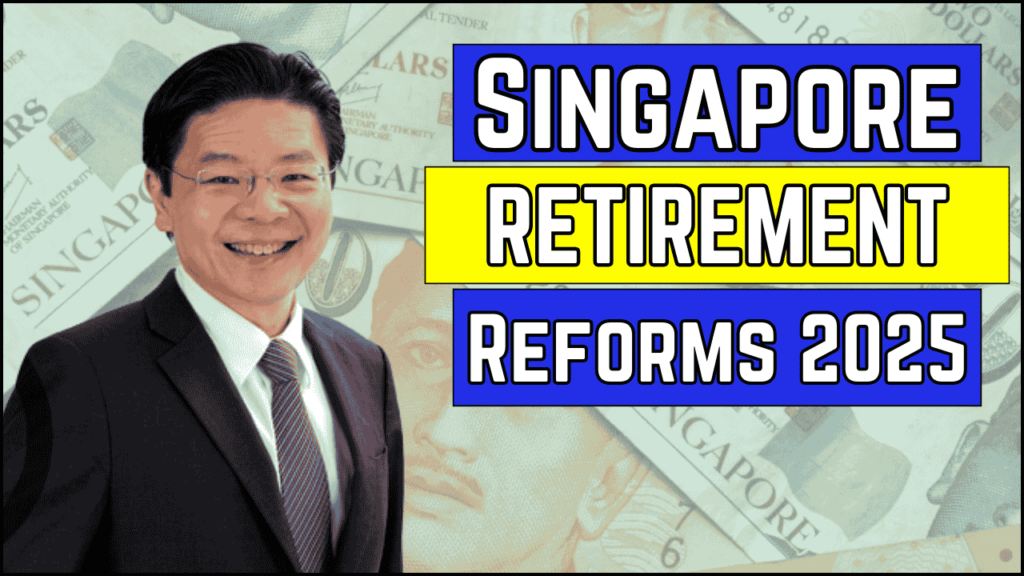
The Singapore Retirement Reforms 2025 mark a significant shift in the government’s approach to ensuring financial security for retirees. This effort, led by the revisions in the Central Provident Fund (CPF) system, addresses rising living costs, increasing life expectancy, and diverse needs across socioeconomic groups. Let us delve into the key facets of these reforms, exploring their benefits and potential challenges.
Enhanced Financial Security: Understanding CPF Revisions
The CPF scheme, introduced in 1955, has evolved to become a critical safety net for Singapore’s aging population. Employers and employees contribute to CPF accounts, which fund retirement, healthcare, and housing needs. The reforms in 2025 focus primarily on boosting CPF’s retirement savings system through revised retirement sum tiers:
Retirement Sums and Monthly Payouts
| Tier | Sum in 2024 (SGD) | Sum in 2025 (SGD) | Monthly Payout in 2025 (SGD) |
|---|---|---|---|
| Basic Retirement Sum (BRS) | 105,000 | TBD | 1,000 |
| Full Retirement Sum (FRS) | 210,000 | TBD | 2,000 |
| Enhanced Retirement Sum (ERS) | 315,000 | 426,000 | 3,300 |
The government’s gradual increase in these sums aims to ensure retirees have sufficient monthly income for a dignified lifestyle. The most notable rise is seen in the Enhanced Retirement Sum (ERS), which is targeted toward individuals aspiring for greater financial independence.
Gradual Increase in Retirement Age
Reflecting the nation’s rising life expectancy—projected to exceed 85 by 2040—the government has implemented a progressive increase in the minimum retirement age. From 63 years in 2024, the age will rise to 64 in 2026 and to 65 by 2030. This phased approach aims to balance workforce sustainability with enhanced savings for older workers.
Inclusive Reforms for Self-Employed Workers
The 2025 reforms extend CPF benefits to self-employed individuals, freelancers, and gig workers, addressing long-standing disparities:
- Monthly Return: Self-employed workers can expect monthly payouts ranging from SGD 200 to SGD 400 based on their contributions.
- Voluntary Contributions: They can voluntarily contribute to Ordinary, MediSave, and Special Accounts, enhancing their retirement, healthcare, and savings provisions.
This inclusion helps bridge gaps in retirement planning for non-salaried workers, offering them equitable financial protection.
Coping with Rising Living Costs
In response to increasing living expenses, CPF revisions are designed to align retirement payouts with inflationary pressures. Higher payouts under the revised BRS, FRS, and ERS tiers allow retirees to manage necessities, medical care, and leisure activities. The reforms ensure retirees are not left financially vulnerable as costs rise.
Benefits and Challenges of CPF Reforms
Benefits:
- Improved Financial Security: Higher CPF savings tiers ensure retirees can better manage living expenses without financial stress.
- Inclusivity: Extending CPF to self-employed individuals widens the safety net, promoting fairness.
- Alignment with Demographics: Gradual age increases account for rising life expectancies, ensuring long-term system viability.
Challenges:
- Contribution Burden: For employers and employees, the rise in required CPF contributions may strain finances, especially for low-income earners.
- Delays in Access: The retirement age extension could pose challenges for individuals reliant on CPF payouts.
- Communication of Reforms: Ensuring all citizens understand and navigate the new regulations effectively remains a key hurdle.
Future Projections for CPF Retirement Benefits
Projections for ERS over the next few years demonstrate consistent improvements:
| Year | ERS Cap (SGD) | Monthly Payout (SGD) |
|---|---|---|
| 2025 | 426,000 | 3,300 |
| 2026 | 440,800 | 3,440 |
| 2027 | 456,400 | 3,550 |
These figures reflect the government’s proactive measures to address long-term retirement needs while sustaining higher payout tiers.
Social Programs and Support
Additionally, the 2025 reforms introduce supplemental programs such as $200 prepaid debit cards for Social Security retirement. These cards aim to provide immediate relief to eligible retirees, helping them with essentials while ensuring financial independence.
FAQs
1. How does the CPF system help retirees?
Ans: The CPF system pools contributions from employers and employees to provide retirees with steady monthly payouts. These funds cover basic living expenses, medical care, and other needs, ensuring financial security during retirement.
2. What are the key CPF revisions for 2025?
Ans: The 2025 reforms focus on raising retirement sums under BRS, FRS, and ERS tiers to offer higher monthly payouts. They also include extending CPF benefits to self-employed individuals and increasing the retirement age to match demographic trends.
3. How will the reforms affect self-employed workers?
Ans: Freelancers, gig workers, and small business owners can now receive monthly CPF returns and make voluntary contributions to improve their retirement savings. This inclusive measure ensures equitable financial security for all.
Final Thoughts
The Singapore Retirement Reforms 2025 underline the government’s commitment to safeguarding the financial stability of its aging population. By enhancing CPF savings tiers, gradually increasing the retirement age, and including self-employed individuals, these reforms address the diverse needs of citizens while mitigating the challenges of an aging society. Though implementation may present challenges, the overall outlook for retirees’ financial security is positive, reflecting a more inclusive and sustainable retirement planning system.